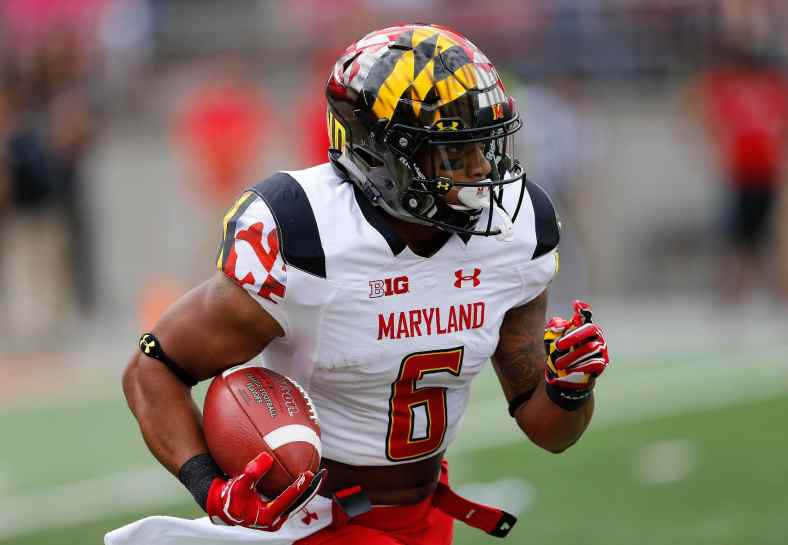
Explosive plays have become commonplace in today’s offense-driven era of college football, and those huge gains often come from a regular group of elite playmakers.
Heading into the 2018 season, Stanford running back Bryce Love leads an impressive bunch of big-play artists. They’ve been there and done that — and run past plenty of defenders. And others, such as Georgia’s D’Andre Swift, are set to join that group.
Quarterbacks, running backs, receivers and tight ends were all considered for the list.
Khalil Tate, QB, Arizona
In a matter of four October weeks during the 2017 season, Khalil Tate ascended from backup quarterback to emerging Heisman Trophy candidate. The Arizona quarterback ultimately dipped out of that conversation but still reached 3,000 yards of total offense despite playing a major role in only nine games. Tate ranked first nationally with five runs of 70-plus yards. His success led Brandon Dawkins to transfer, so Tate will have a full-season opportunity to rack up impressive stats in 2018.
AJ Dillon, RB, Boston College
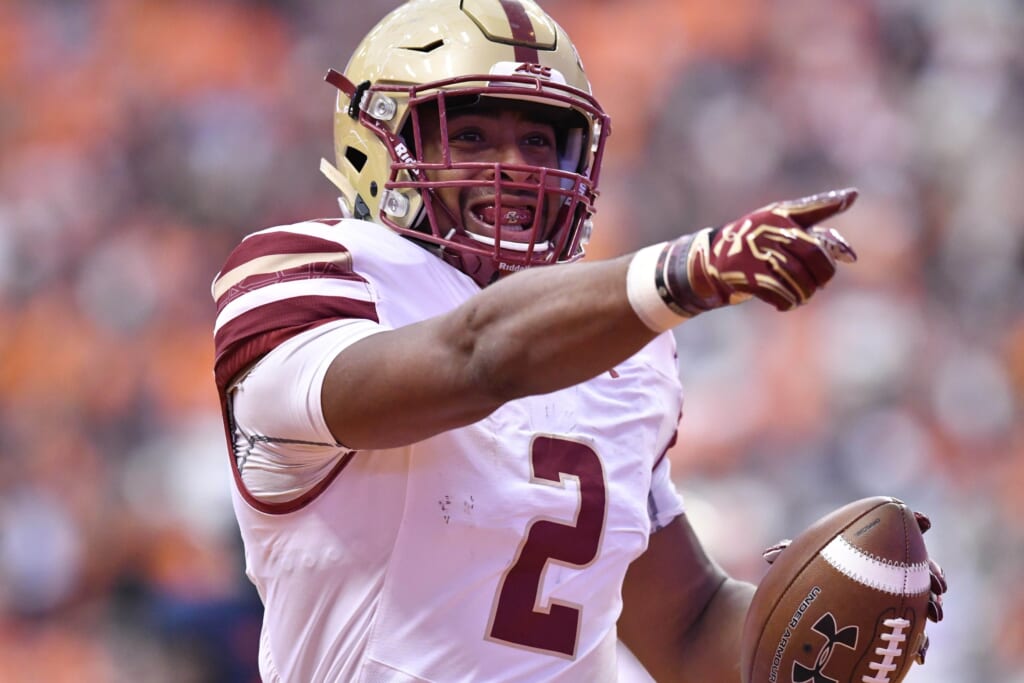
AJ Dillon completely, thoroughly dominated the last seven games of 2017. After mustering only 333 yards in his first six appearances, the then-freshman scampered for 1,256 to close the season. His top performance came in an upset of Louisville, running for 272 yards and four touchdowns with the most vicious stiff arm of the year. Dillon was one of only nine players in the country who recorded at least five runs of 50-plus yards. If Boston College is able to improve in the win column, Dillon might be able to join the Heisman conversation.
Anthony Johnson, WR, Buffalo
Of everyone returning to college football, nobody had more 40-plus-yard receptions last season than Anthony Johnson. His nine such catches tied for the second-most nationally, along with two other players featured on this list — Oklahoma’s Marquise Brown and Missouri’s Emanuel Hall. Johnson, a junior-college transfer, collected 76 passes for 1,356 yards and 14 touchdowns in his debut season at Buffalo. And if quarterback Tyree Jackson stays healthy this season, those already-remarkable numbers could rise.
Devin Singletary, RB, Florida Atlantic
Devin Singletary isn’t the most explosive player, yet arguing with his consistency and production would just be dumb. As a sophomore, he mustered 94 yards in Florida Atlantic’s first two games before registering 12 straight games of 100-plus yards. All told, Singletary amassed 1,920 yards and 32 touchdowns with a 6.4-yard average. The offensive line is working to replace a trio of starters, but Lane Kiffin consistently schemed open running lanes for Singletary last year anyway. He’s due for another huge campaign.
D’Andre Swift, RB, Georgia
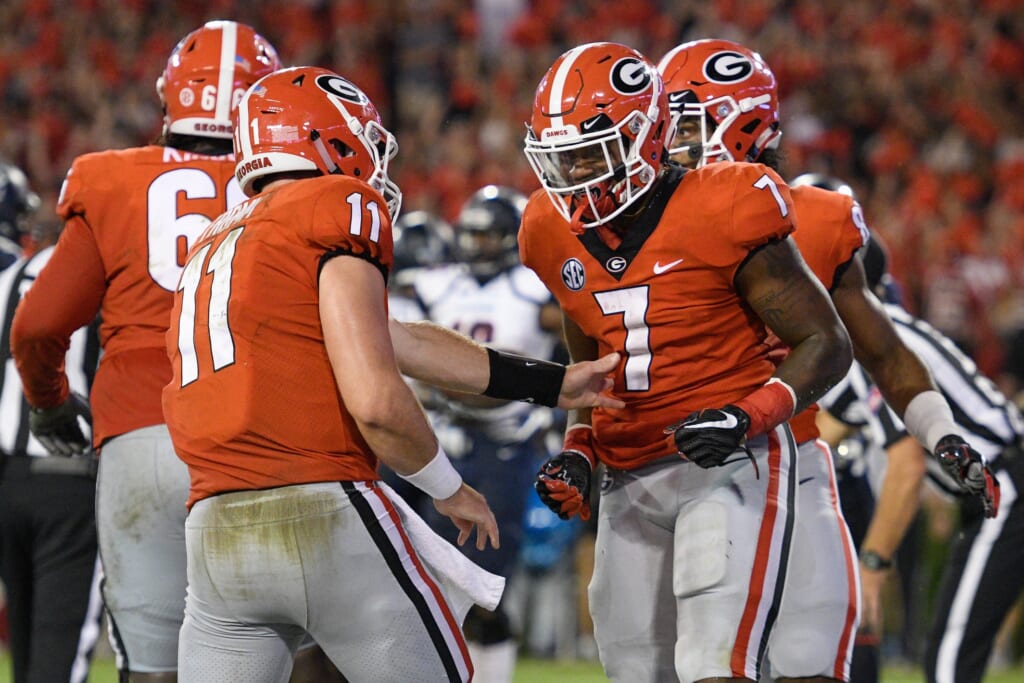
Although he didn’t get many opportunities as a freshman, D’Andre Swift certainly made his touches count. The third-stringer behind Nick Chubb and Sony Michel amassed 618 yards on only 81 attempts, posting a per-carry average of 7.6 yards. Despite his limited role, that ranked 10th nationally. In 2018, Swift will be Georgia’s featured back and run behind an offensive line that returns four starters. Even with promising teammates competing for snaps, it’s easy to see him matching the production of his predecessors.
Ty Johnson, RB, Maryland
Although he’ll never be labeled a “bell-cow back,” Ty Johnson is in a class of his own when talking about efficiency. Through three years at Maryland, the speedster boasts a stunning average of 7.5 yards per attempt. Plus, last season, Johnson’s six carries of 40-plus yards tied for ninth nationally along with Dillon and Saquon Barkley. If the Terps can finally settle the quarterback position, Johnson should enjoy more space to run. Considering what he’s accomplished despite the revolving door at QB, that should be a scary thought for defenses.
Darrell Henderson, RB, Memphis
Similar to Johnson, Darrell Henderson doesn’t need many touches to make opponents have regrets. In 2017, the Memphis standout tallied the third-highest per-carry average in the nation at 8.9 yards. Henderson picked up 1,154 yards and nine touchdowns on only 130 attempts. Plus, he eclipsed the century mark on seven occasions. The Tigers need to replace quarterback Riley Ferguson and wide receiver Anthony Miller, so they’ll be expecting Henderson to take advantage of having four returning starters on the offensive line.
Nick Fitzgerald, QB, Mississippi State
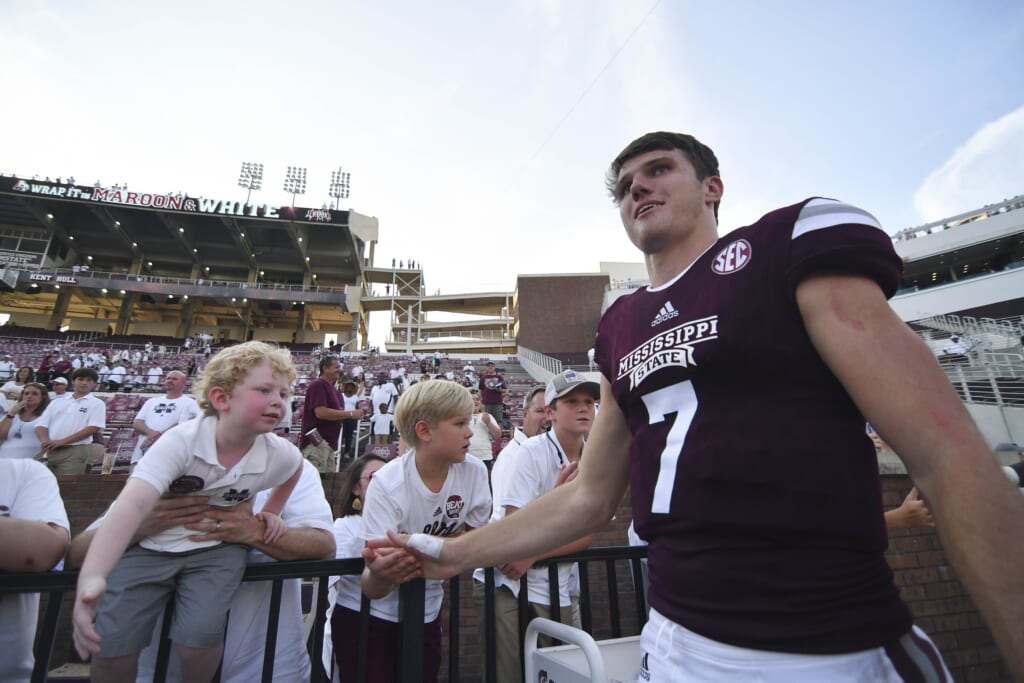
An ankle injury prevented Nick Fitzgerald from completing the 2017 season, but he still accounted for 29 touchdowns. The dual-threat quarterback enters his senior campaign with more than 6,500 offensive yards over the last two years. Best of all for Fitzgerald, the arrival of former Penn State offensive coordinator Joe Moorhead should eliminate concerns of the scoring attack regressing. That system helped Trace McSorley thrive and should be an ideal fit for the mobile Fitzgerald.
Emanuel Hall, WR, Missouri
Emanuel Hall caught just 33 passes as a junior on a mediocre team, so he’s not a household name. Nevertheless, nearly half of them (14) covered 20 yards or more. Hall finished the season with nine receptions of 40-plus yards, a number exceeded only by Oklahoma State’s James Washington and Boise State’s Cedrick Wilson. Missouri quarterback Drew Lock returns for his senior year, and the gifted downfield thrower will often be looking Hall’s way for an explosive gain. And if 2017 was any indication, they’ll connect at a nationally impressive rate.
Malcolm Perry, QB, Navy
After spending most of 2017 contributing as a running back, Malcolm Perry shifted to quarterback and will spearhead Navy’s triple-option attack in 2018. He’ll take over for Zach Abey, a 1,400-yard rusher who returns but isn’t as explosive as Perry. The rising star averaged 8.6 yards per carry last season and registered a pair of 250-yard efforts late in the year. Perry is still developing as a passer, but his value as a runner is already both clear and immense. With Perry under center, Navy will remain among the nation’s leaders in rushing efficiency.
Nathan Rourke, QB, Ohio
When the dust settled on the 2016 season. Ohio thought it had a long-term starter in Quinton Maxwell. That sounded like a great plan until Nathan Rourke showed up. A junior college transfer prior to 2017, he quickly took control of the offense in his debut season with the Bobcats. Rourke gathered 3,115 yards of total offense and accounted for 39 total touchdowns. He only threw seven interceptions in 292 attempts, too. Among quarterbacks, Rourke’s 12 runs of 20-plus yards tied for sixth-most nationally.
J.K. Dobbins, RB, Ohio State
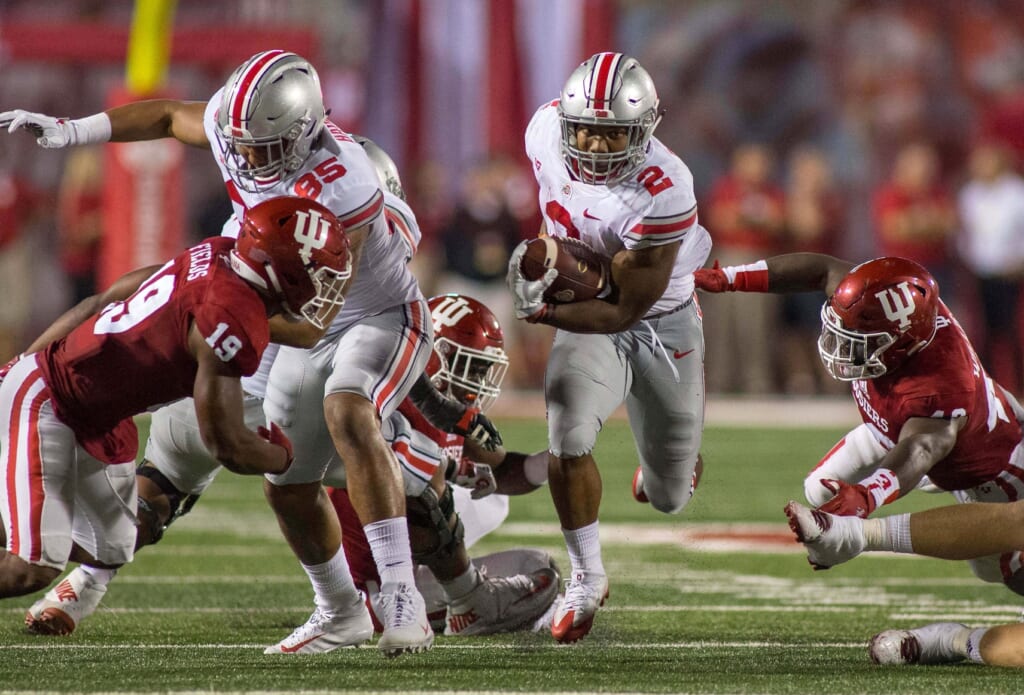
J.K. Dobbins capitalized on his season-opening opportunity with 181 yards against Indiana in the absence of Mike Weber. That was simply the start of a special year for the standout freshman, who never relinquished control of the starting job. He tallied 1,403 rushing yards and seven scores for the Big Ten champions and chipped in 22 receptions for 135 yards and another touchdown. Dobbins tied for the country’s eighth-most 20- and 30-yard gains on the ground. Now that J.T. Barrett has graduated, Dobbins may carry an even heavier load in 2018.
Marquise Brown, WR, Oklahoma
Though he’d already eclipsed the 100-yard mark twice, Marquise Brown became a recognizable name because of his breakout day opposite rival Oklahoma State. “Hollywood” compiled season-best marks of nine receptions, 265 yards and two touchdowns in the 62-52 thriller. That massive showing helped Brown finish 2017 with the second-most catches of 40-plus yards in the Football Bowl Subdivision. Kyler Murray will replace Baker Mayfield behind center, and it’s safe to assume the first-round MLB draft pick will be regularly eyeing the speedy Brown.
A.J. Brown, WR, Ole Miss
Perhaps the most imposing slot receiver in the country, A.J. Brown snared 75 passes for 1,252 yards and 11 touchdowns as a sophomore. The 6-foot-1, 225-pounder returns to an Ole Miss team that lost Shea Patterson to Michigan yet brings back a promising signal-caller in Jordan Ta’amu. He and Brown connected for at least one touchdown during each of Ole Miss’ last four games in 2017. Now that they’ve had a full offseason to work together, Ta’amu and Brown should form one of the nation’s most prolific aerial combinations.
Bryce Love, RB, Stanford
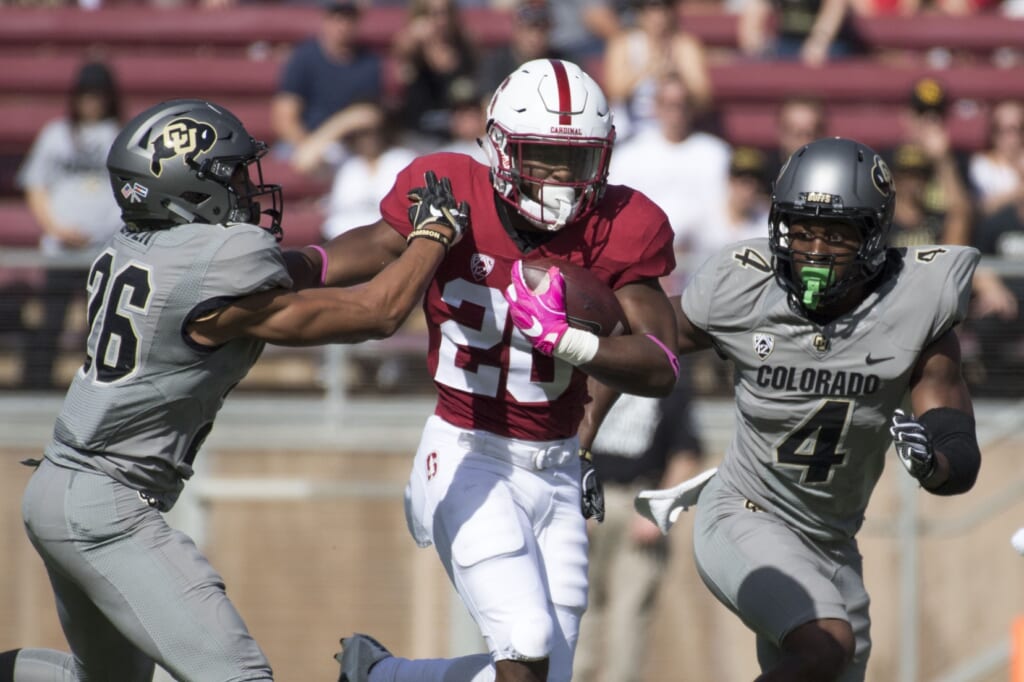
Hitting the 1,000-yard mark is an accomplishment for running backs. Stunningly, Bryce Love only needed five games in 2017 to cruise past the barrier — and then recorded another 1,000-plus yards. The speedster set a Stanford record with 2,118 yards on the ground, scoring 19 touchdowns en route to a second-place finish in Heisman Trophy voting behind Mayfield. Love also broke an FBS record with 13 runs of 50-plus yards. If he can avoid a nagging late-season injury like the one that hampered him in 2017, Love could take home the Heisman.
Diontae Johnson, WR, Toledo
Can he repeat this level of production without Logan Woodside? That’s a reasonable question for Diontae Johnson, but we’re not going to discount what he achieved in 2017. After missing an entire season due to injury, he exploded for 74 receptions, 1,278 yards and 13 touchdowns. Johnson’s five catches of 50-plus yards tied for the most in the country. He also returned one kickoff and one punt to the house. Johnson, along with fellow stars Jon’Vea Johnson and Cody Thompson, give Toledo a dynamic, experienced receiving corps.
McKenzie Milton, QB, UCF
The leader of UCF’s unblemished 2017 team, McKenzie Milton routinely picked apart defenses for the AAC and Peach Bowl champions. He ranked no lower than eighth in every 10-yard increment of aerial gains between 20 and 60 yards. Additionally, the sophomore had the second-highest yards per attempt (10.2) in the FBS. Milton totaled 4,037 yards and 37 touchdowns through the air while running for 613 yards and eight more scores. The arrival of Josh Heupel should keep Milton as one of the nation’s most prolific quarterbacks.
Myles Gaskin, RB, Washington
Myles Gaskin doesn’t overwhelm defenses, but he’ll continually jab them one frustrating carry at a time. In three seasons at Washington, Gaskin has raised his rushing average each year. And after scoring a combined 25 times as a freshman and sophomore, he nearly matched that total with 24 touchdowns in 2017. For good measure, Gaskin has notched three straight 1,300-yard campaigns. Washington is an early favorite to win the Pac-12, and Gaskin’s production — especially in short-yardage and red-zone situations — will be vital to that effort.
David Sills V, WR, West Virginia
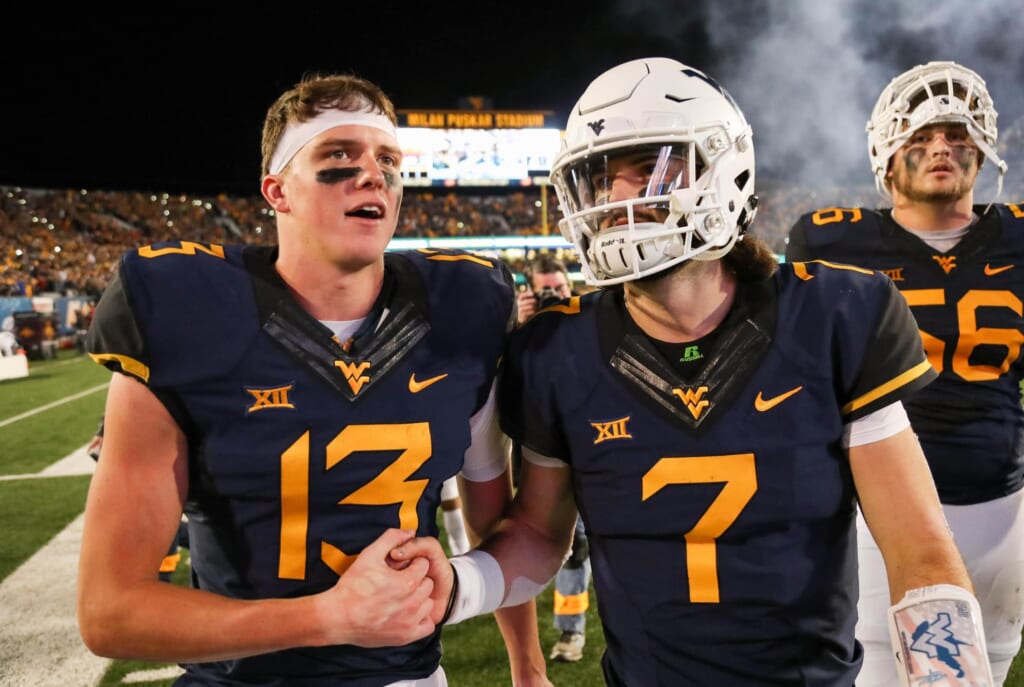
Once a coveted quarterback prospect, David Sills V has successfully made the change to wide receiver. Yes, it helps to have Will Grier slinging the football, but Sills earned second-team AP All-America honors in 2017. He collected 60 catches for 980 yards, and his 18 touchdowns tied Memphis’ Anthony Miller for the most in the nation. Additionally, Sills was one of only 11 players with at least eight receptions of 40-plus yards. The Grier-Sills connection will once again be lethal as West Virginia aims for its first-ever Big 12 crown.
Jonathan Taylor, RB, Wisconsin
Wisconsin’s tradition of excellence at running back is safe in Jonathan Taylor’s control. As a true freshman, he racked up 1,977 yards and 13 touchdowns as Wisconsin won a program-best 13 games. Taylor secured a second-team AP All-America spot in addition to his Big Ten Freshman of the Year award. He topped the century mark 10 times and even surpassed 200 yards in three games. Since the Badgers’ entire offensive line returns for 2018, Taylor is expected to have another mammoth year and should contend for the Heisman Trophy.